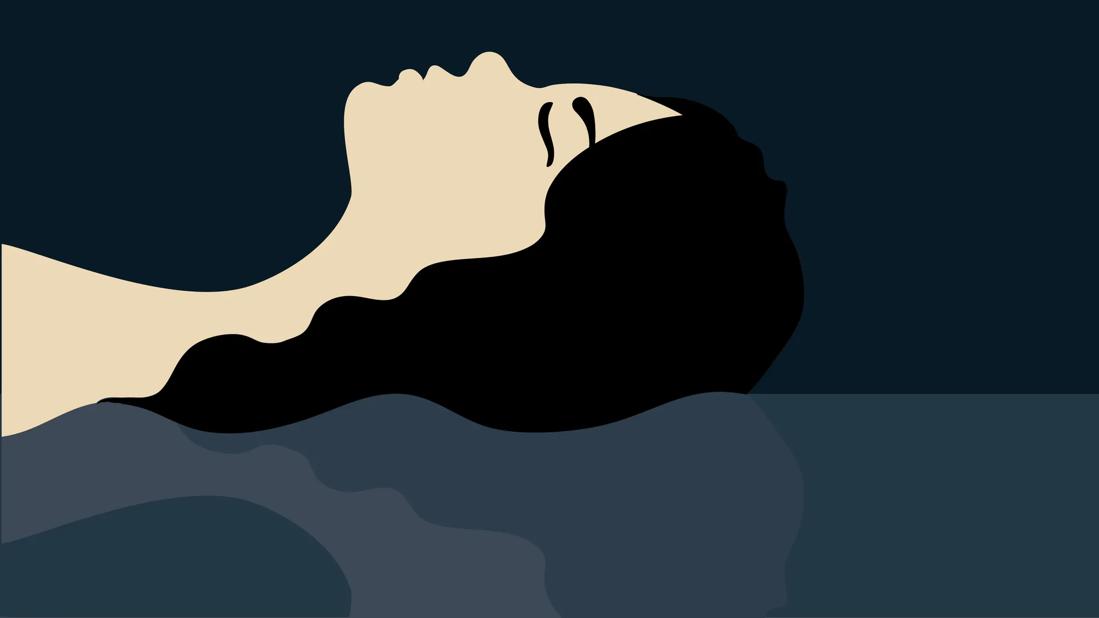Sensory deprivation therapy can help relieve stress, improve sleep and decrease physical pain

If you’re feeling overwhelmed, the solution might be REST — and we’re not talking about a nap.
Advertisement
Cleveland Clinic is a non-profit academic medical center. Advertising on our site helps support our mission. We do not endorse non-Cleveland Clinic products or services. Policy
REST is short for “restricted environmental stimulation therapy.” The meditation technique often takes place in water-filled sensory deprivation tanks, where you float in dark silence, removed from external stimuli.
The idea behind float therapy (also known as sensory deprivation therapy) is to enter a state of deep relaxation that puts your mind and body at ease to promote both mental and physical healing.
Does the concept sink or swim? Let’s find out from functional medicine specialist Melissa Young, MD.
Float therapy offers an escape from distractions that can overload your senses. When you enter a sensory deprivation tank and close the hatch, you’re sealed off from outside influences and stimuli.
“The intent is to give your mind and body a break to reset,” says Dr. Young. “You remove the clutter and noise and distractions of daily life. Everything is stripped away. It’s just you, untethered.”
The tank is dark and quiet, giving your eyes and ears a welcome rest. The chamber is filled with a shallow pool of water saturated with Epsom salt, offering buoyancy that helps you effortlessly float.
The feeling of weightlessness that comes with floating heightens that sense of detachment from the world. Essentially, it creates an environment where you’re not even bound by the laws of gravity.
Advertisement
“By not touching a hard surface, it helps complete that feeling of disconnect,” notes Dr. Young.
The temperature of the water and chamber is set to match your skin temperature, too, allowing you to better mesh with your surroundings.
So, why would you want to slip into a sensory deprivation tank and float around for 30 minutes to an hour? Well, here are a few reasons.
Researchers in one small-scale study found that flotation therapy sessions can help decrease:
Another limited study showed that feelings of optimism often increase following sensory deprivation therapy. Those good vibes can work to boost creativity, focus and even athletic performance.
Dr. Young traces the positive results to just setting aside time to be mindful and in the moment.
“It’s all about breaking away and mentally resetting,” she says.
A review of studies found that float therapy might help you get better ZZZs at night, with positive results maintained for up to six months after treatment.
“We’re living in a go-go-go world that never slows down,” recognizes Dr. Young. “Our focus always seems to be on what we have to do next. It’s not easy to just turn that off at night. But if you can clear your mind, it may help put sleep within reach.”
Feeling better mentally can translate into feeling better physically. Studies show that sessions in a flotation tank can reduce the perceived intensity of severe chronic pain from aching muscles.
Researchers attributed the results to decreased stress and an overall feeling of relaxation that soothes tense muscles.
“It’s the mind-body connection,” explains Dr. Young. “Stress can increase feelings of pain. But if you can manage that stress and keep it from spiraling, it may bring pain levels down and help you feel more comfortable.”
If you’ve been reading this and thinking there’s no way you could spend 30 minutes to an hour inside a dark tank … well, you’re not alone. “It’s not the best idea for someone who has feelings of claustrophobia,” says Dr. Young.
Float tanks also aren’t recommended if you have:
Limited research shows promising results when it comes to float therapy. If you’re open to getting into a sensory deprivation tank, it seems there’s little risk in giving it a try as part of your mindfulness program.
“Meditation comes in many varieties and forms,” says Dr. Young. “Float therapy is just another option to consider.”
Advertisement
Advertisement
Learn more about our editorial process.
Advertisement

Breathing, exercise, mindfulness and more can help you unwind and step away from your stress

From breath meditation to yoga nidra, all types of meditation aim to help you feel calmer, more relaxed and present

Different types of yoga poses, meditation and breathwork may help you feel more emotionally balanced

You don’t need to have years of experience to reap the rewards of meditation — with benefits for your whole body, you only need a couple minutes to get started

While walking, be mindful of your body, your mind, your place in the world and all five of your senses as you pave a path forward, one step at a time

Thunder, waterfalls and heavy rain — these low-frequency sounds might help cancel out disruptive noises and thoughts

Immersing yourself in nature can improve both your mental and physical health

This bedtime exercise can help you fall asleep faster (and stay asleep)

The best parenting style balances enforcing rules and showing plenty of love

Tips include cutting back on sugar, focusing on exercise and managing stress

It can be harder to let go when you’ve invested time, energy and emotions — but it might be the healthier choice long term